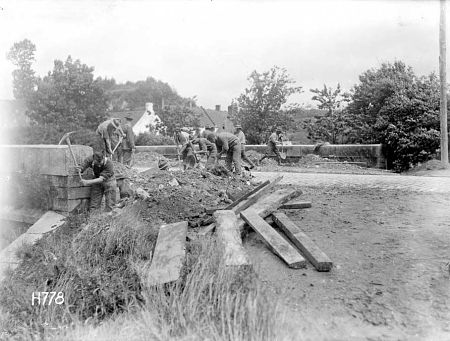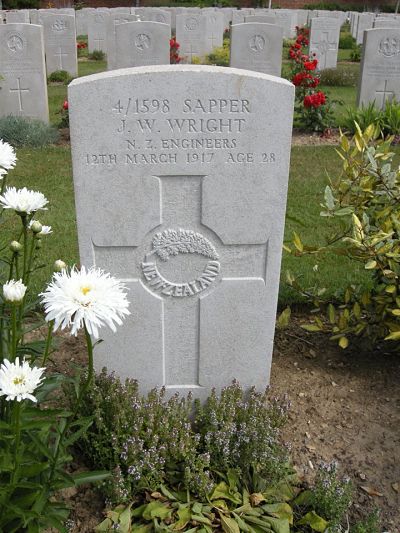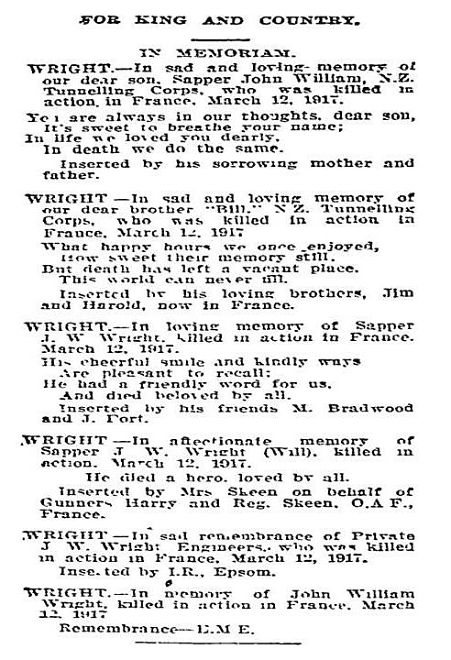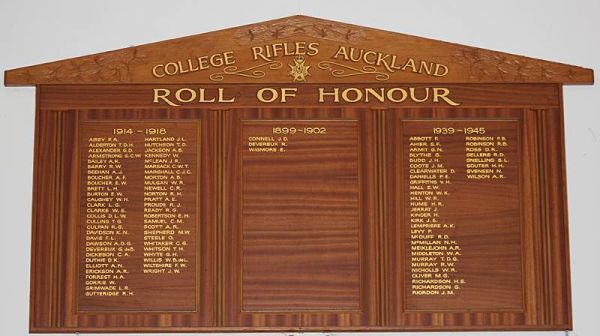WW1 Sapper John William Wright (4/1598) N Z Tunnelling Company
John William Wright was the second son of James and Hannah Wright, of Arch Hill, an employee of the City Council. He was born in Leicestershire, England, on 27 March 1889 and with his elder brother came to Auckland in 1912, and was employed by the firm of Stonex and White, engineers.
He was a member of the College Rifles Rugby Football Club in Remuera. He was well known in cycling circles, and was a member of the Y.M.C.A. In October, 1915, he enlisted in the New Zealand Tunnelling Corps, as a sapper / engineer, having been a miner in England. [1]
Most of the tunnellers were quarrymen, gold miners from Waihi and Karangahake, or labourers from the Railways and Public Works departments. Others were coal miners from the West Coast of the South Island, but these workers were generally discouraged from enlisting due to the essential nature of their industry. After initial training in Avondale camp, the NZ Tunnelling Company embarked at Auckland on 18 December 1915 on the New Zealand Shipping Company refrigerated cargo vessel SS Ruapehu. The ship sailed across the Pacific via Cape Horn. After a voyage of two months, with a brief stopover in Dakar, they arrived in Plymouth on 18 February 1916. John Wright had been promoted to Lance Corporal in November 1915. [2]
In March 1916 the tunnellers became the first New Zealanders to arrive on the Western Front. They headed to Arras where initially the unit conducted mine warfare in 1916. The British had discovered the existence of large underground chalk quarries, originating from Roman times. This discovery gave rise to an ambitious plan by the British Third Army to gather a large body of surprise troops underground for the forthcoming offensive, without attracting the attention of the enemy. The plan was to link these vast underground caves with tunnels that would take the troops from the centre of Arras to the German front line. They worked 24 hours a day and 7 days a week in 3 shifts, each one consisted of an officer, a sergeant, a corporal, a lance-corporal and about 15 sappers. [3] The tunnellers were helped in their daily fight by the British infantrymen. Each shift worked 8 hours beneath the trenches, then came back to the Company quarters located at Arras for a resting time between 16 and 24 hours according to periods of the war.
They helped construct a complex system of galleries, subways, kitchens, headquarters and hospitals – facilities capable of comfortably housing at least 12,000 men at any one time. To assist orientation, the locations in one of the systems were all given New Zealand place names, from Bluff at one extremity to Russell at the other (another tunnel system had British place names). Godley Avenue, named after the New Zealand Expeditionary Force commander, Sir Alexander Godley, linked the locations. The New Zealanders also left graffiti on the walls, including a large ‘Kia Ora’ flanked by ferns. [4] By the end of January 1917, in less than 5 months, the men had managed to dig more than 10 kms of tunnels and to connect the quarries – they created a city within the city of Arras, safe from enemy attack.
By March 1917 the men were working on digging tunnels under no man’s land. Tunnels were also driven to positions just short of the German trenches to assist communication as the attack developed. However, some of these efforts were negated by the February pull back of Germans in part of the sector, following the sudden abandonment by the Germans of the Somme battlefield and withdrawal to the Hindenburg Line. During the advance of 9 April the German line was pushed back 5 kilometres, and the Canadian Corps seized Vimy Ridge. As with most Western Front battles, this victory was achieved at a great cost in lives, with more than 3500 Canadians being killed and a further 7000 wounded. [5]
When he was killed in action on 12 March 1917 at age 28, John Wright was acting as a despatch-rider. He was killed by a shrapnel bullet in Orderly Room, Forward Billets and was buried in Arras.
Sapper Wright was one of only two New Zealanders to die in France on 12 March and was the only one in the Arras area. Sapper John Wright was one of 34 soldiers buried in Faubourg D’amiens Cemetery, Arras, Pas-de-Calais, France on 12 March 1917. Others included 12 Cameron Highlanders and one Argyll and Sutherland Highlanders soldier. [6]
He is remembered on the College Rifles Roll of Honour, Remuera and the Pitt Street Methodist Church Roll of Honour, 78 Pitt Street, Auckland 1016.




